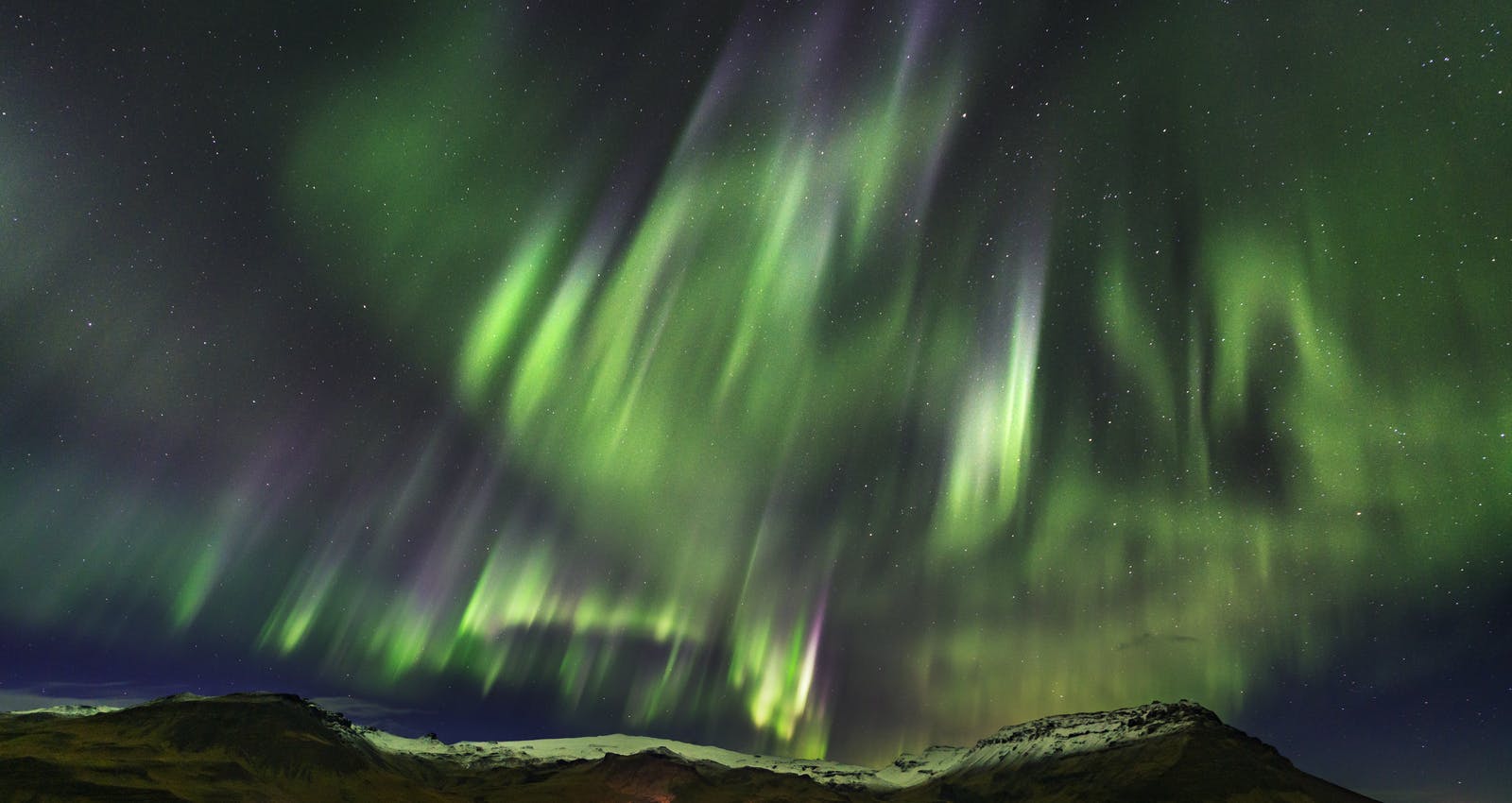
Colours of the Northern Lights
The northern lights, also known as the Aurora Borealis, are a stunning natural phenomenon characterised by colourful displays of light in the Earth's night sky, predominantly in high-latitude regions near the Arctic Circle. Travellers trek to Iceland from around the world to catch a glimpse of the green, violet, and red lights dancing in the night sky. There's something special about bundling up in your warmest winter gear, trekking outside main towns to avoid bright lights, and hunting for northern lights.
The Science Behind the Northern Lights
The Aurora Borealis is a phenomenon caused by solar winds, which blow electrons or electrically charged particles into atoms and molecules in Earth's upper atmosphere, causing an emission of bright light. The best time to see northern lights is from September to April. We recommend checking out an Aurora Forecast to predict visibility. When the forecast is favourable, it's best to drive (or take a tour bus) to a dark area and look up.
The Spectrum of Northern Lights Colours
These colours result from interactions between charged particles from the sun and the Earth's magnetic field and atmosphere. The primary colours of the Northern Lights are green, red, and purple, though other colours like pink, blue, and yellow can also occasionally appear.
Green

The most common northern lights colour is green. It is produced when charged particles, mainly electrons, collide with oxygen molecules at altitudes around 60 to 150 miles (100 to 240 kilometres) above the Earth's surface. During these collisions, the energy from the electrons is transferred to the oxygen molecules, which then release that energy in the form of green light.
Purple
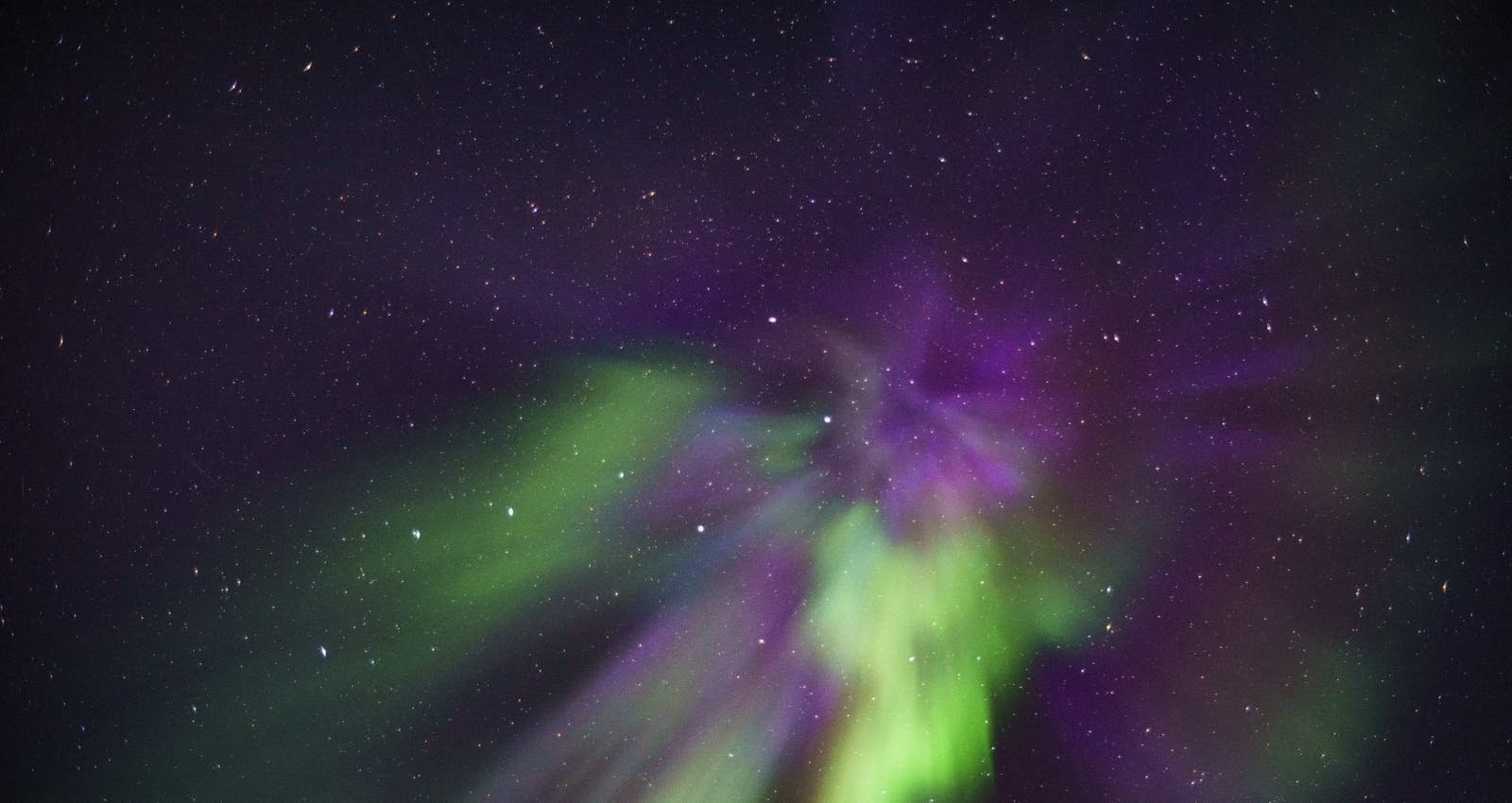
Purple hues in the northern lights are less common but visible every now and then, especially during intense solar storms. These colours are usually produced by a mix of nitrogen and oxygen molecules at varying altitudes and with different energy levels. The specific shades of purple and pink depend on the altitude and the types of molecules involved.
Pink
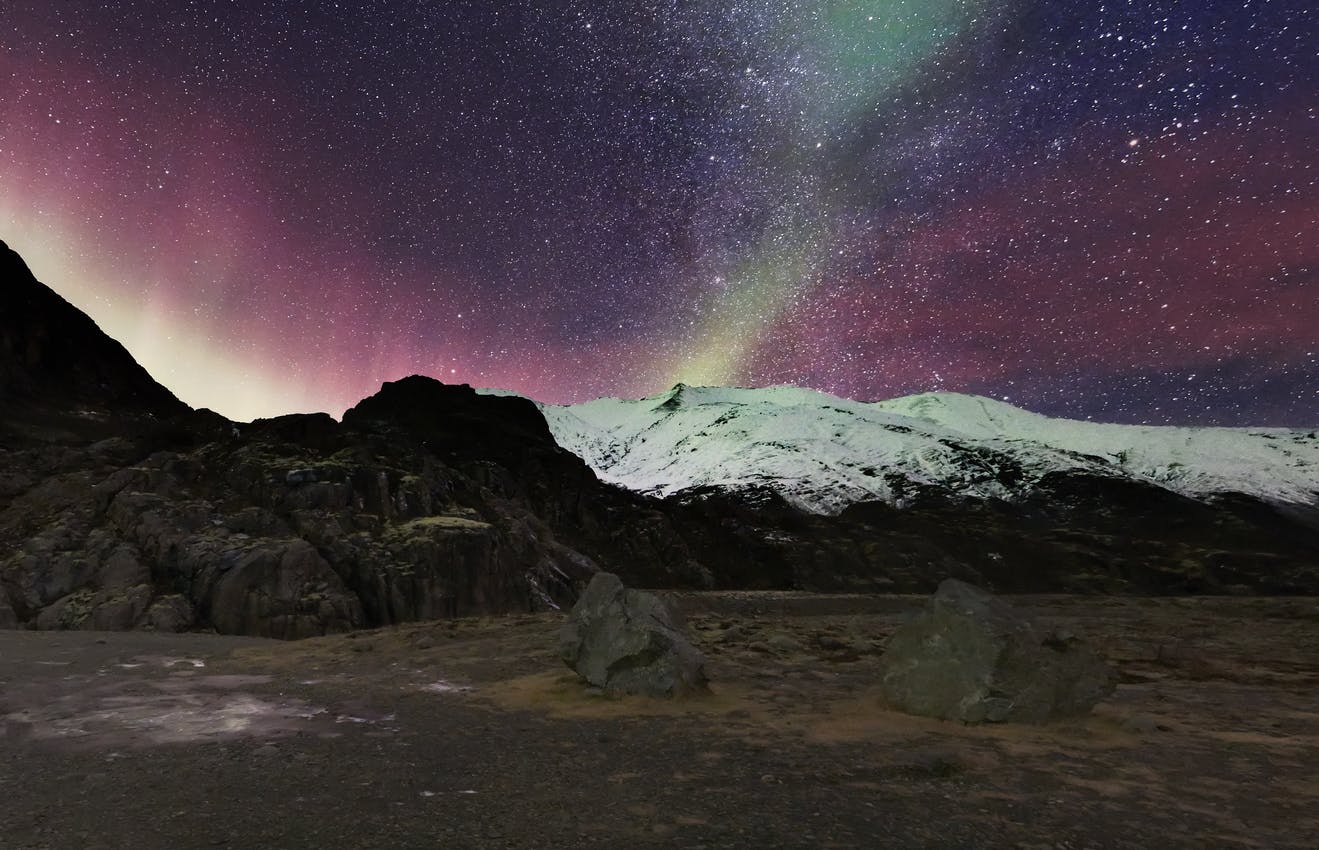
Pink often appears at the lower edges of the red and green areas or as a mix of red, green, and blue.
Yellow
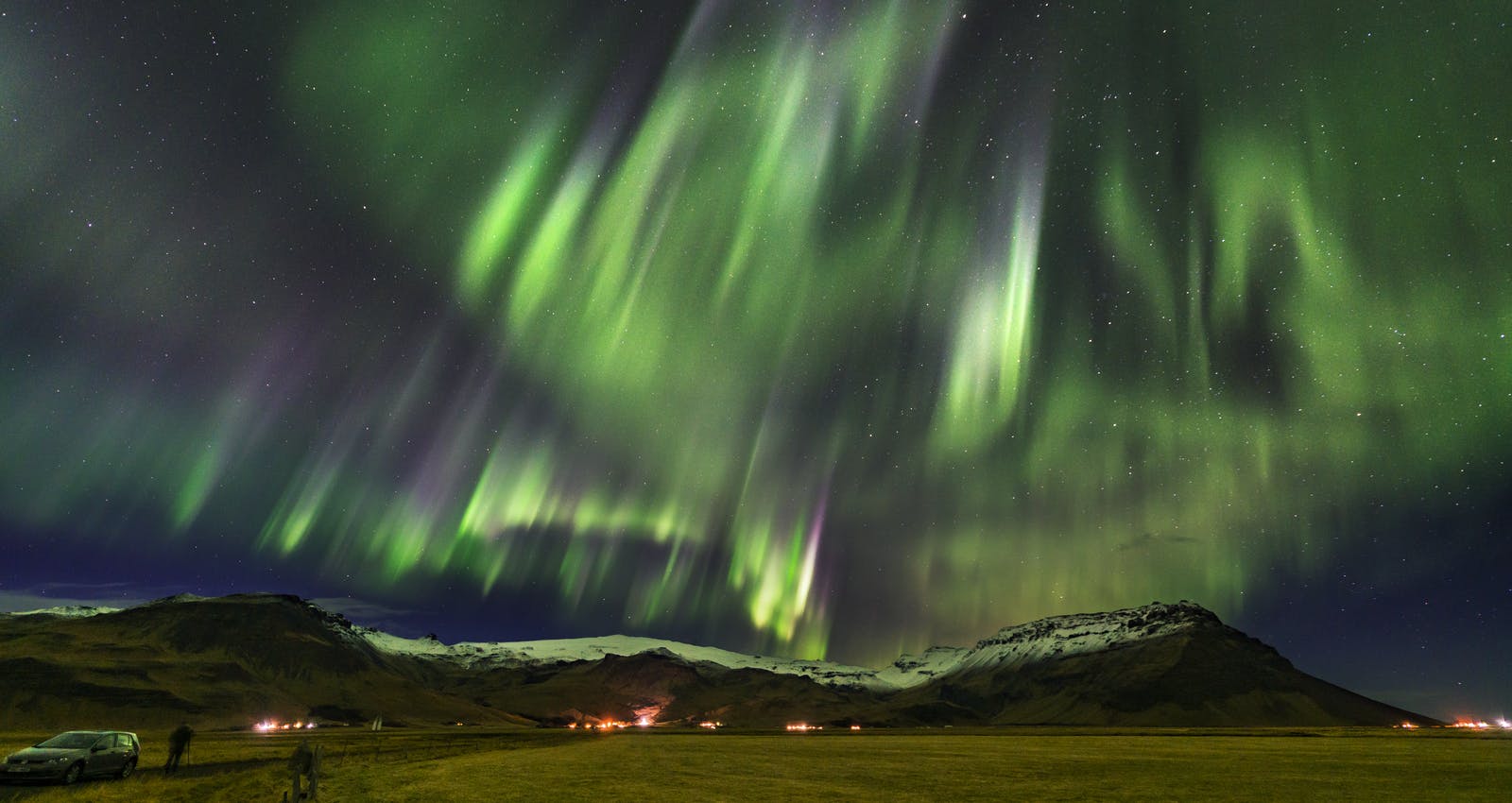
Yellow auroras are relatively uncommon as well. They result from a combination of oxygen and nitrogen molecules being excited at different altitudes, producing yellowish hues.
Red
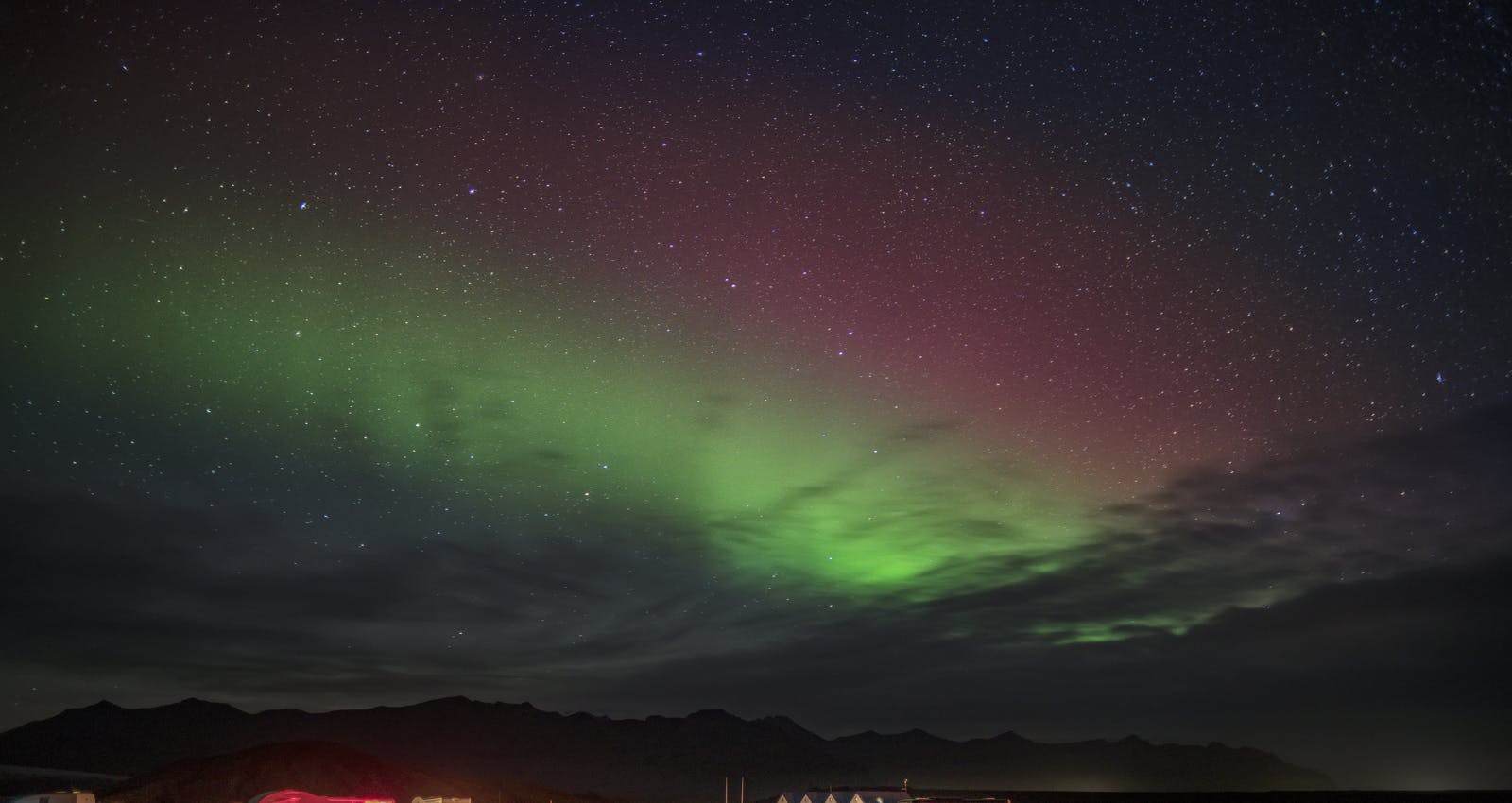
Red is often seen in conjunction with green auroras. It occurs at higher altitudes, typically between 150 and 200 miles (240 to 320 kilometres) above the Earth's surface. Red auroras are the result of charged particles interacting with high-altitude oxygen atoms. The oxygen at this altitude emits red or crimson light when excited.
Blue
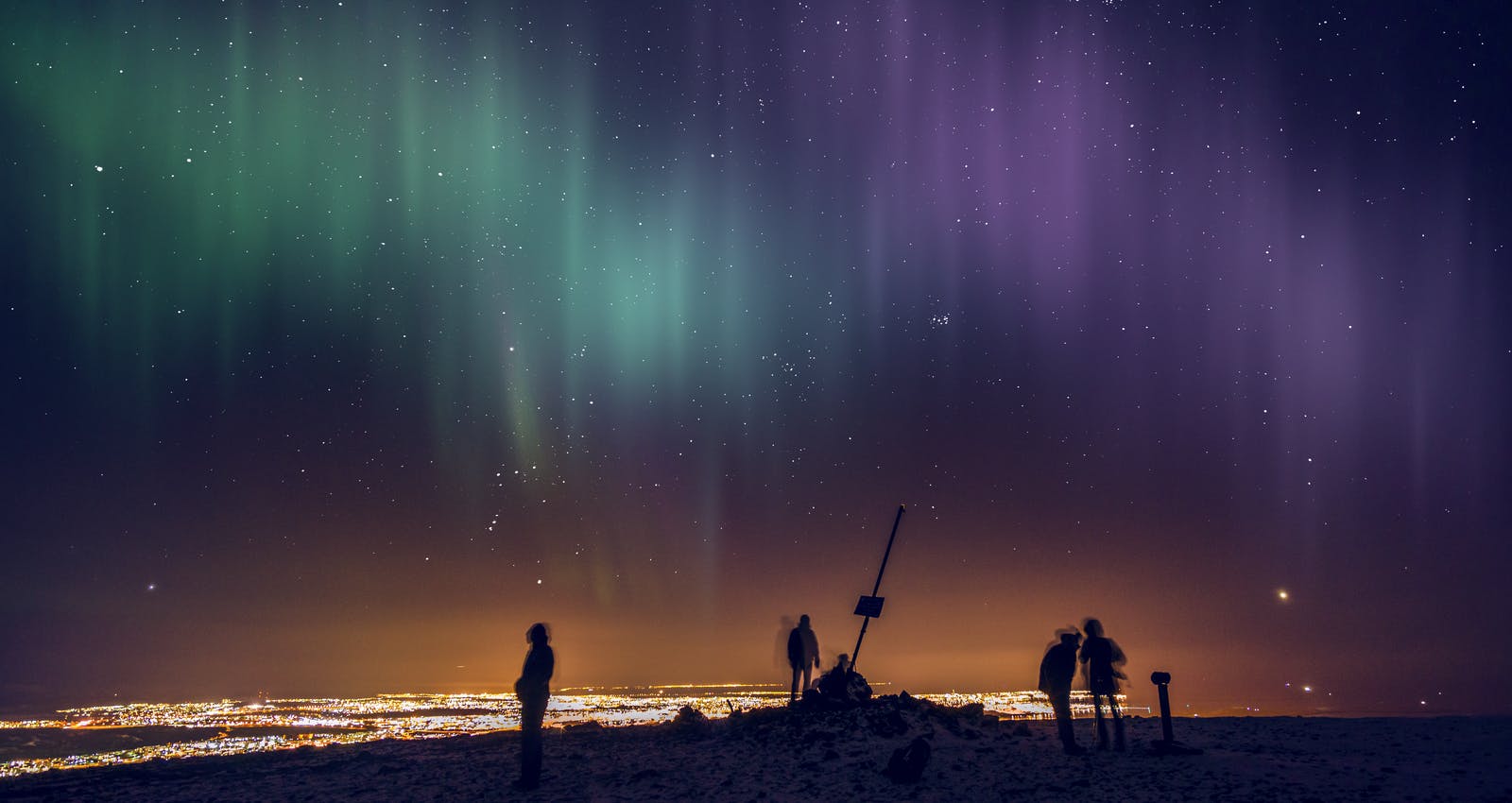
Blue auroras are rarer than green or red. They occur at lower altitudes, usually below 60 miles (100 kilometres). Blue is produced when electrons collide with nitrogen molecules in the upper atmosphere, causing them to emit blue light.
Factors Influencing the Colours of the Aurora Borealis
The exact colours and their intensity can vary depending on the energy and speed of the incoming charged particles, the altitude at which the collisions occur, and the types of gases involved in the interactions.
- Altitude: The altitude at which the solar particles collide with the Earth's atmosphere plays a significant role in determining the colours of the auroras. Different gases at varying altitudes react differently when excited, leading to a spectrum of colours.
- Type of Gas: The Earth's atmosphere is primarily composed of oxygen and nitrogen. When these gases are excited by charged solar particles, they emit light in specific colours. Oxygen, for instance, can produce green or red light, while nitrogen can produce blue or purple light.
- Level of Solar Activity: The intensity of solar activity can influence the colours and brightness of the auroras. Higher levels of solar activity can lead to more vibrant displays and a broader range of colours.
The Northern Lights are a breathtaking natural spectacle, and the variety of colours they display adds to their mystique and beauty.
Best Places and Times to Witness the Spectrum of Aurora Borealis Colours
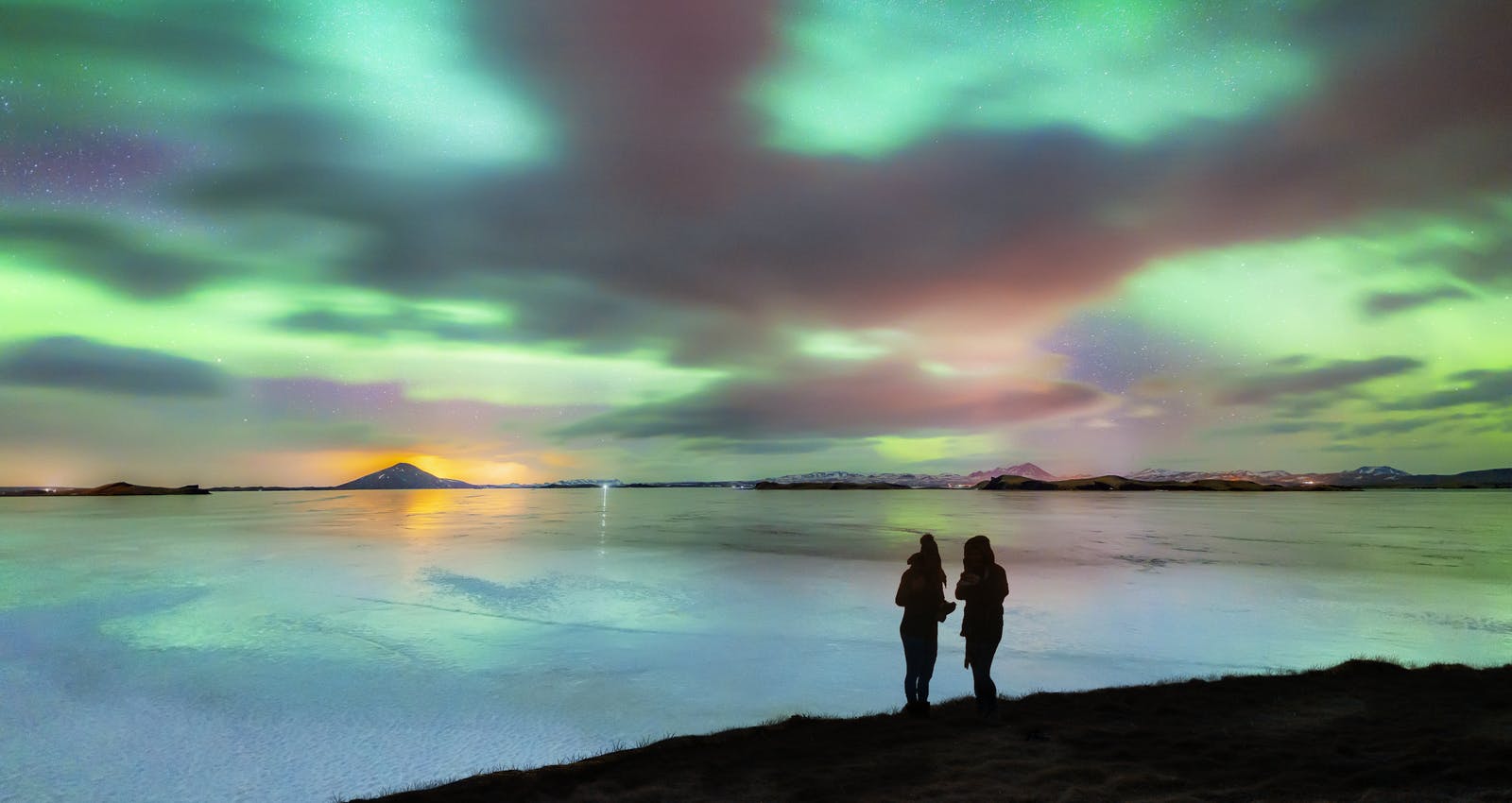
The best way to witness this phenomenon is to visit regions with high auroral activity during winter, such as Iceland, northern Scandinavia, the US state of Alaska, or parts of Canada. Here are the best places to see the northern lights in Iceland.
While the Northern Lights are a must-see in Iceland, another astronomical event will make 2026 even more special. The Solar Eclipse 2026 in Iceland will be a total eclipse visible from Reykjavík, offering a rare chance to experience both phenomena in one destination.
Photographing the Northern Lights
Photographing the northern lights can be challenging for those who are not professional photographers. Some Northern Lights tours offer help from the tour guide to set up your camera settings correctly, and you will also get the chance to be photographed with auroras in the background if you do not have a camera.
Where Can I Learn About Northern Lights in Reykjavík?
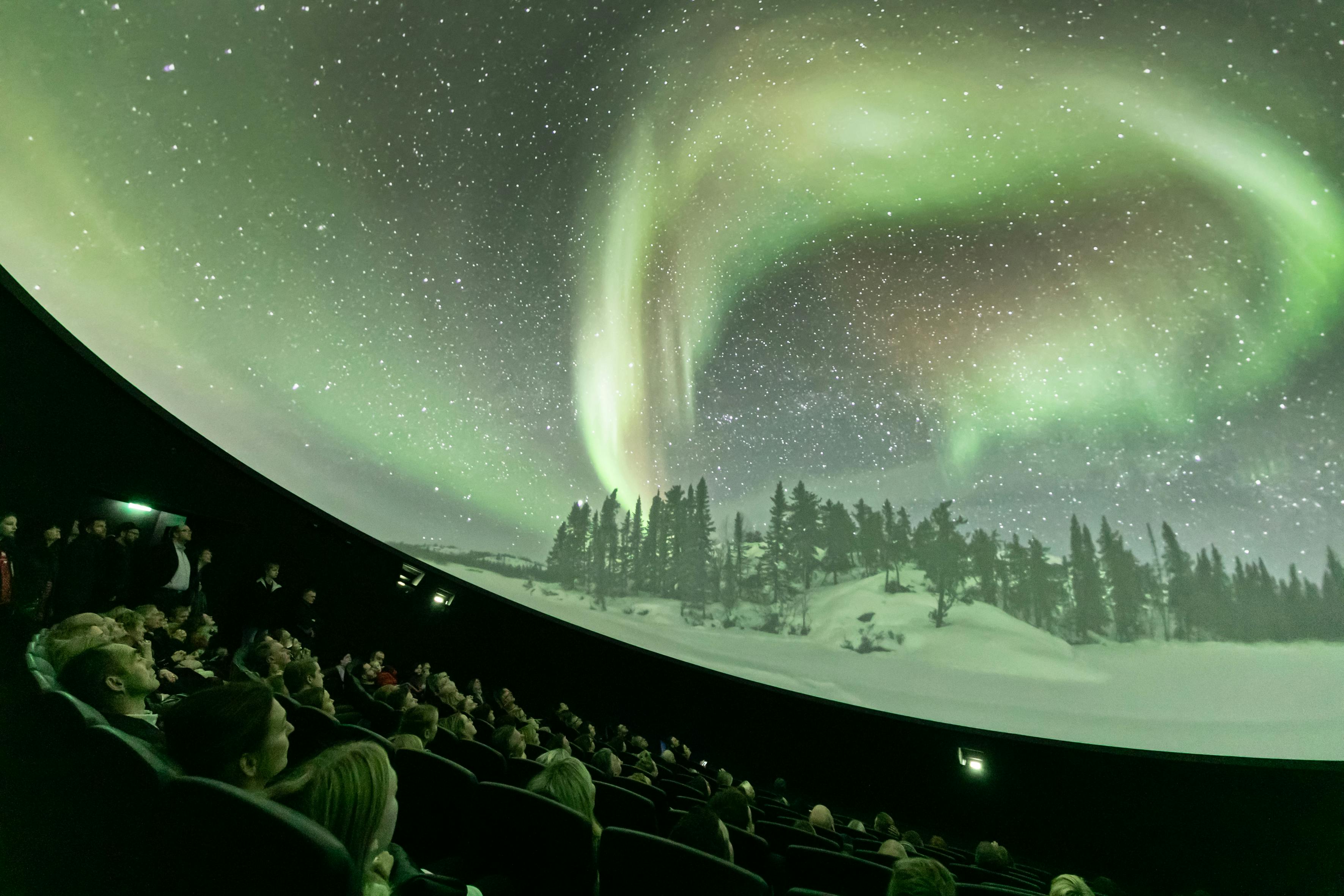
Perlan's Northern Lights Show, Áróra, is a breathtaking film about northern lights. The film includes many stories, combining science and art to create a unique experience for guests. At Perlan, you can learn how northern lights form, hear fascinating tales about them and see fantastic displays. In Icelandic nature and outer space, the northern lights virtually dance around you.
Perlan is home to Iceland's only planetarium and uses a state-of-the-art 8K projection system and surround sound system to bring you the full spectrum of the magical story of the northern lights.
FAQ
What are the colours of the Northern Lights?
The most common colour of the northern lights is green, but it's also possible to see yellow, blue, red, pink, and purple hues. The exact colours and their intensity can vary depending on the energy and speed of the incoming charged particles, the altitude at which the collisions occur, and the types of gases involved in the interactions.
How many colours are in the northern lights?
The Northern Lights can display a range of colours, including green, pink, yellow, blue, violet, and occasionally orange and white.
What are the rarest type of colours in the northern lights?
The rarest colour in the Northern Lights is a deep blue or purple, which is a result of ionized nitrogen at even lower altitudes. This colour is not seen as often as others and is a treat for those lucky enough to witness it.
Popular tours
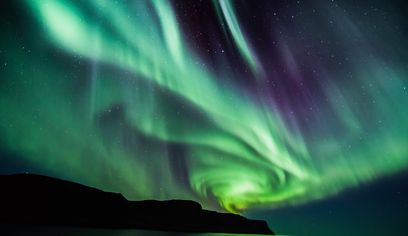
The #1 Northern Lights Tour in Iceland | FREE photos, Homemade Hot Chocolate & cinnamon buns

Reykjavík Northern Lights Cruise

Aurora Basecamp Night pass

Reykjavík Whales & Northern Lights

Northern Lights Tour from Reykjavik, With Photographs, Local Pastrys and Hot Chocolate

DT 310 Private Superjeep Northern Lights

NORTHERN LIGHTS AND STARGAZING (Guided in 10 languages)

GOLDEN CIRCLE AND NORTHERN LIGHTS (Guided in 10 languages)

Aurora Viking - The Private Tour - Northern Lights Tour

Northern Lights w/Aurora Viking - free pro photos - Free Retry – minibus
